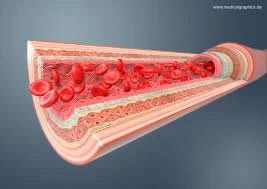Signs of symptoms of limb ischemia are often referred to as the “six Ps”:
Pain – an early symptom of limb ischemia. For patients with existing peripheral vascular disease, this means either gradual or sudden increase in pain, especially with movement, that worsens as limb ischemia progresses.
Pallor – pale or mottled skin color.
Poikilothermia – cool temperature from insufficient blood flow to the extremity.
Pulselessness – inability to palpate the extremity pulse from severely reduced or absent blood flow to the extremity.
Paresthesias – numbness/tingling from nerve ischemia.
Paralysis – occurs with advanced ischemia.
Emergency department evaluation of a patient with a lower extremity complaint includes assessing extremity motor function, circulatory function, and neurologic function.
Assessment of circulatory function must include skin color and temperature, and the arterial pulses in the extremity. In the lower extremity, this includes the dorsalis pedis pulse on the dorsum of the foot and posterior tibial pulse at the ankle, at a minimum. If the distal arterial pulses are not palpable or are weak and there is a concern about arterial supply to the lower extremity, a bedside Doppler to assess the pulse. If there is a concern for inadequate arterial flow into the leg, an Ankle-Brachial Index (ABI) can be assessed at bedside using a blood pressure cuff and the Doppler. The blood pressure is taken using the Doppler at both the ankle and the patient’s upper arm and the ratio between the two is calculated by dividing the systolic blood pressure at the ankle by the systolic blood pressure at the arm. An ABI greater than 0.9 is normal. The ABI can be compared to prior vascular studies to assess for worsening arterial flow as the cause of the patient’s leg pain.
If there is concern for critical limb ischemia or an acute arterial occlusion, a formal arterial Doppler is required to confirm or refute either condition. The formal arterial Doppler uses several blood pressure cuffs and ultrasound to assess the pressures in the leg and assess blood flow in the leg at several different levels. Arterial Doppler identifies decreased or absent blood flow caused by acute occlusions or stenosis in the lower extremity arteries.
Limb ischemia medical expert witness specialties include vascular surgery, podiatry, radiology, emergency medicine, urgent care medicine, internal medicine, trauma, and general surgery.

